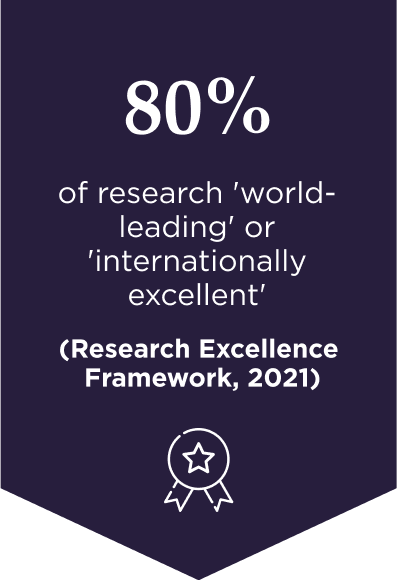What does complexity leadership mean?
Posted on: June 9, 2022
Complexity leadership theory (CLT) has risen to prominence in recent decades as it looks to understand how successful organisations thrive in turbulent times and even in crisis. CLT focuses on emergent processes within complex systems. Despite its name, CLT does not fixate on a leader as being the key player in the success of an organisation but emphasises the whole system including social interactions and how all agents within a team help to manage complexity. CLT is in fact a systems theory in which the role of the leader is as a facilitator.
In a VUCA business environment – volatile, uncertain, complex, and ambiguous – CLT can be key to an organisation being adaptive in complex situations. In fact, organisations can be treated as complex adaptive systems (CAS). Fundamental CAS principles that organisations may display include self-organisation, interdependence, complexity, space of possibilities, emergence, self-similarity, and co-evolution. This approach is increasingly valuable in a time when business leaders have had to react to the outbreak of a pandemic, increasing threat of war, and the escalation of the climate crisis.
Complex systems involve many simple parts, which are intertwined. These parts, also known as agents, interact in ways that give rise to evolutionary processes and emergent behaviours, which can’t always be predicted.
Central to a CAS functioning are:
- agents
- interconnectedness of multiple agents
- environment
- feedback influencing the ongoing evolution of the system
What is the difference between complexity and chaos?
Valuable traits such as creativity, flexibility, innovation, and agility exist on the edge of chaos, and it is these traits that need to come to the fore in times of crisis. There is a fine line between complexity and chaos though, and although chaos is undesirable, it should be treated as a transitional state which can and will arise and needs confronting if an organisation is to survive.
Traditional hierarchical systems belong to times of stability when the linearity of cause and effect can be relied upon. However, in a complex world, these top-down, bureaucratic approaches no longer work, particularly not in moments of chaos. Change and innovation come from the bottom up but they cannot thrive in the overly constricting frameworks of hierarchical systems.
In a traditional ordered system, the level of constraint means that agent behaviour within the networks is limited to the rules of the system. In chaos, agents are totally unconstrained and so are susceptible to statistical analyses. In a CAS, there is an element of co-evolution between agents and systems. The agents are lightly constrained by the system to provide some structure; however, the agents are also able to modify the system by their interaction with it. This symbiotic, self-organising nature is a prime characteristic of CAS. The ability to learn to adapt differentiates it from other self-organising systems.
Ensuring a robust interdependent network structure is in place helps to maintain system equilibrium, while experienced leadership that balances flexibility and stability can provide guidance through decision making in chaotic situations.
What is the Cynefin Framework?
The Cynefin Framework understands that different contexts call for different responses. Originally devised by Dave Snowden, the name Cynefin (pronounced kuh-nev-in) comes from a Welsh word which is untranslatable but refers variously to place, habitat, haunt, acquainted, and familiar. According to the Cynefin website, it signifies “the multiple, intertwined factors in our environment and our experience that influence us (how we think, interpret and act) in ways we can never fully understand.”
The Cynefin model is actually a decision support and sense-making framework that offers five different domains to help categorise a problem or decision and respond accordingly. Each of the five domains offers a sequence of responses to guide leaders.
Unordered
- Complex – Probe, Sense, Respond
The domain of emergence where one correct solution may present itself and there may or may not be cause-and-effect relationships evident. This is where many businesses find themselves, in the realm of unknown unknowns. Patterns can emerge with patience when experiments are carried out which can safely fail. With guidance, teams should be encouraged to explore innovative, creative solutions.
- Chaotic – Act, Sense, Respond
The domain of rapid response, in chaotic situations, there is no relationship between cause and effect. The primary and urgent goal is to establish stability so that the system can establish order again. Crisis and emergency scenarios fall into this category and demand fast action, but also accurate risk analysis. Being able to communicate effectively in a crisis is also vital for leaders.
Ordered
- Complicated – Sense, Analyse, Respond
This is the domain of experts where a problem may have multiple solutions that are considered correct. Because the problem is complicated even if there is a clear line between cause and effect, the solution may not be visible to everyone. The “analyse” part of the response is where the experts come in to help make the situation more visible.
- Obvious – Sense, Categorise, Respond
This is often referred to as the domain of best practice – the safe known knowledge with a clear line of cause and effect. Unfortunately, this route can also breed complacency through oversimplifications, for example, when a leader believes that what worked before is still applicable or that there is a one-size-fits-all template for success.
Disorder or confusion
This is when there is no clarity around which domain an organisation is in. In a 2007 article in the Harvard Business Review, Snowden and his colleague Mary Boone wrote, “Here, multiple perspectives jostle for prominence, factional leaders argue with one another, and cacophony rules. The way out of this realm is to break down the situation into constituent parts and assign each to one of the other four realms. Leaders can then make decisions and intervene in contextually appropriate ways.”
Leading change in complex systems with an MSc Management with Sustainability
Effective leaders today know that they can make better decisions by being adaptable in their approach to changing circumstances – certain leadership approaches are only relevant as long as the context remains the same. However, in a world in flux where unpredictability means that short-term decisions need frequent review, complexity leadership offers a flexible framework.
An online MSc Management with Sustainability from Keele University will give you a solid grounding in understanding complex problems and leadership approaches to strategic planning in uncertain times. Find out how you can start learning while continuing on your career path today.



